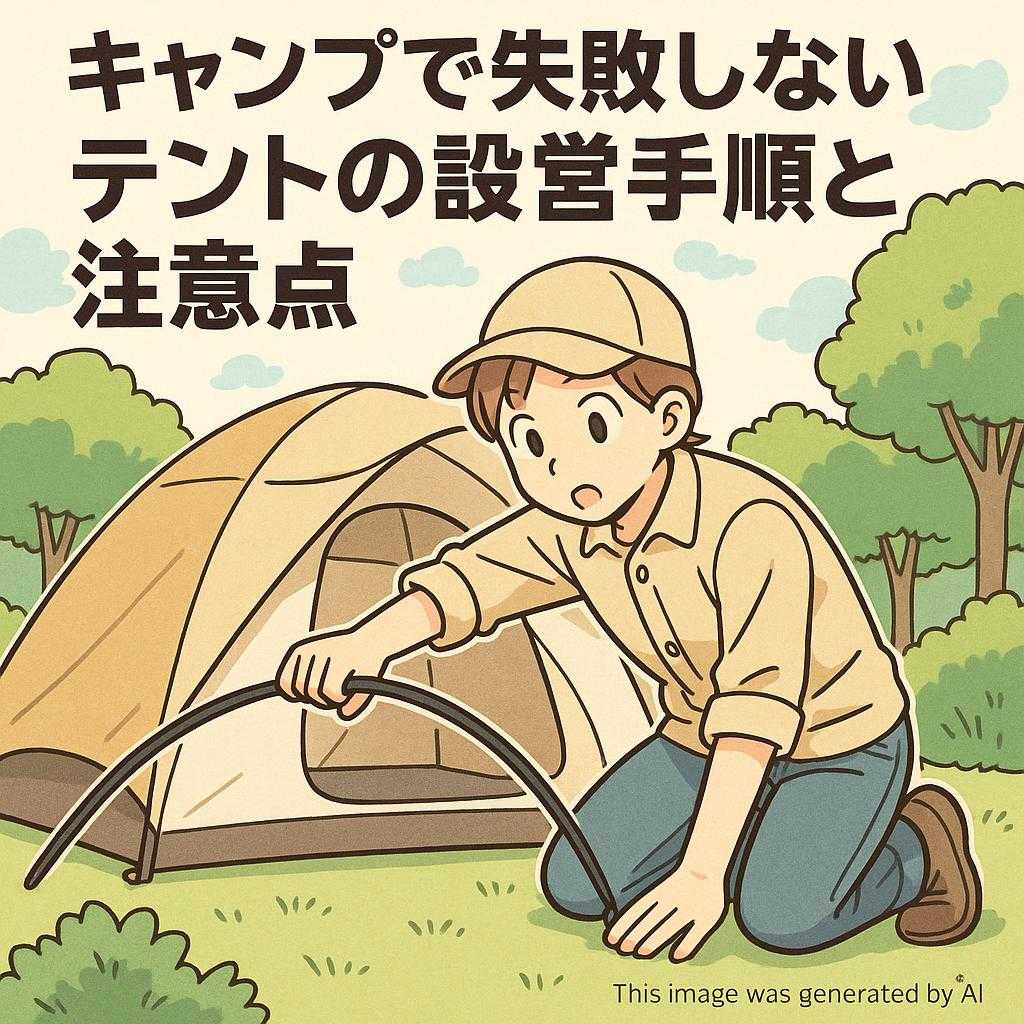
Tent Setup Guide for Camping Beginners
Camping is a wonderful activity that allows you to refresh in nature, but for beginners, the first hurdle is setting up the tent. By knowing the correct steps, you can prevent failures and enjoy a comfortable camping experience. This article provides a detailed explanation of the steps and tips for setting up a tent without failing at camp. The first thing to consider is selecting the right setup location. It’s important that the ground is flat and has good drainage. Next, prepare the necessary tools and set up the groundsheet, inner tent, and flysheet in order. By understanding this basic flow, even beginners can smoothly assemble a tent. Additionally, there are points to be aware of depending on the weather and terrain, which will also be covered. For those starting camping, use this guide as a reference to confidently enjoy outdoor life.
Basics of Tent Setup Without Failing at Camp
To enjoy camping, setting up the tent is extremely important. By choosing the right location and following the correct steps, even beginners can confidently pitch a tent. Here, we will explain in detail the basic steps and points to be aware of to avoid failure.
Selecting the Setup Location
The first thing to consider is the location where you will set up the tent. It’s crucial to ensure the ground is flat and free of stones or obstacles. Especially in rainy weather, avoid low areas prone to puddles and choose elevated or well-drained spots. Also, be cautious under trees as leaves and branches may fall.
Preparing Necessary Tools
Next, gather the tools needed for tent setup. Generally, pegs, a hammer, and guy ropes are necessary. It’s advisable to use sturdy pegs that you purchase yourself rather than relying on included ones. Additionally, having a groundsheet will protect the bottom of the tent.
Assembling the Inner Tent
Start by assembling the inner tent. First, assemble the poles and thread them through the inner tent. It’s important to do this carefully while referring to the instructions. Ensuring the poles are evenly distributed will stabilize the shape.
Attaching the Flysheet
Once the inner tent is complete, cover it with the flysheet. At this point, consider the wind direction and adjust so that the sheet is evenly spread. The flysheet serves to protect against rain and wind, so make sure it’s securely fastened.
Pegging Down and Guy Ropes
Finally, secure the tent with pegs and guy ropes. Driving the pegs into the ground at a 45-degree angle is effective. Also, tension the guy ropes appropriately. This process increases the overall stability of the tent, making it resistant to strong winds.
Common Mistakes and Their Solutions
Common mistakes among beginner campers include “insufficient peg driving,” “loose flysheet,” and “inappropriate location selection.” We will introduce specific solutions for each.
Insufficient Peg Driving
In many cases, tents collapse due to insufficient peg driving. To prevent this, check again after driving the pegs to ensure safety. Depending on the ground, you can also use a large stone instead of a specialized hammer.
Loose Flysheet
A loose flysheet is vulnerable to rain and wind. Therefore, even after setting it up, readjust to ensure it’s taut. Be careful not to pull too much on one part, as it can unbalance the setup.
Inappropriate Location Selection
Setting up in an inappropriate location often leads to trouble. Therefore, it’s recommended to use weather forecasts and map information for location selection as part of your preparation.
Additional Tips to Enhance Comfort
Finally, we introduce additional tips to enhance comfort. These are not mandatory but can lead to a more comfortable camping experience.
Bedding Arrangements
Using sleeping mats or air mattresses as bedding can enhance comfort. Also, don’t forget to prepare sleeping bags for cold weather protection.
Lighting Equipment
Lighting equipment is important for nighttime activities. Portable options like LED lanterns or headlamps are recommended.
To spend a comfortable and safe time at the campsite, such preparation and planning are essential. Even beginners can enjoy camping life with confidence by mastering these basic steps and points to be aware of.
Q&A on Tent Setup Without Failing at Camp
Q1: What is the most important point in tent setup?
A1: The most important point is choosing the ground. Selecting a flat and well-drained location reduces the risk of water pooling inside the tent. It’s also important to consider wind direction and sunlight.
Q2: What are common mistakes beginners make?
A2: A common mistake beginners make is how to lay the groundsheet. If the groundsheet is larger than the tent, it can easily collect water on rainy days. Aim to lay it slightly smaller than the tent.
Q3: What should be prepared before tent setup?
A3: Before setup, checking tools and practicing is necessary. Try assembling the tent at home beforehand to proceed smoothly during the actual setup. Also, check for any missing items like pegs or ropes.
Q4: What are the countermeasures for bad weather?
A4: In bad weather, it’s important to properly set up the rain fly. For wind protection, drive the pegs deeply and tension the ropes tightly. Setting up in a high location can also prevent water damage.
Q5: What should be checked after tent setup?
A5: After setup, check the overall stability and for water leaks. Pay close attention to any looseness in poles or ropes, and on rainy days, ensure there is no water seeping inside.
Q6: Are there any tips for reducing setup time?
A6: To reduce setup time, role distribution and step confirmation are effective. Prepare a step-by-step guide in advance and clarify each person’s role for smooth operation.
By mastering these points, you can implement the “steps and tips for setting up a tent without failing at camp.” Try them out on your next camping trip!
Conclusion
For camping beginners, setting up a tent is the first major hurdle, but by following the basic steps introduced in this article, you can tackle it with confidence. First, selecting the appropriate setup location is crucial. Choose a flat and well-drained spot. Next, prepare the necessary tools and set up the inner tent and flysheet in order. It’s important to proceed carefully while checking the instructions. Additionally, securely fastening with pegs and guy ropes increases stability. By mastering these steps, even beginners can smoothly set up a tent. Furthermore, common mistakes such as insufficient peg driving and loose flysheet are addressed, and understanding their solutions in advance provides peace of mind. To achieve a comfortable camping experience, it’s essential to thoroughly understand these basic preparations and points to be aware of. For those starting camping, use this guide as a reference to confidently enjoy outdoor life.
